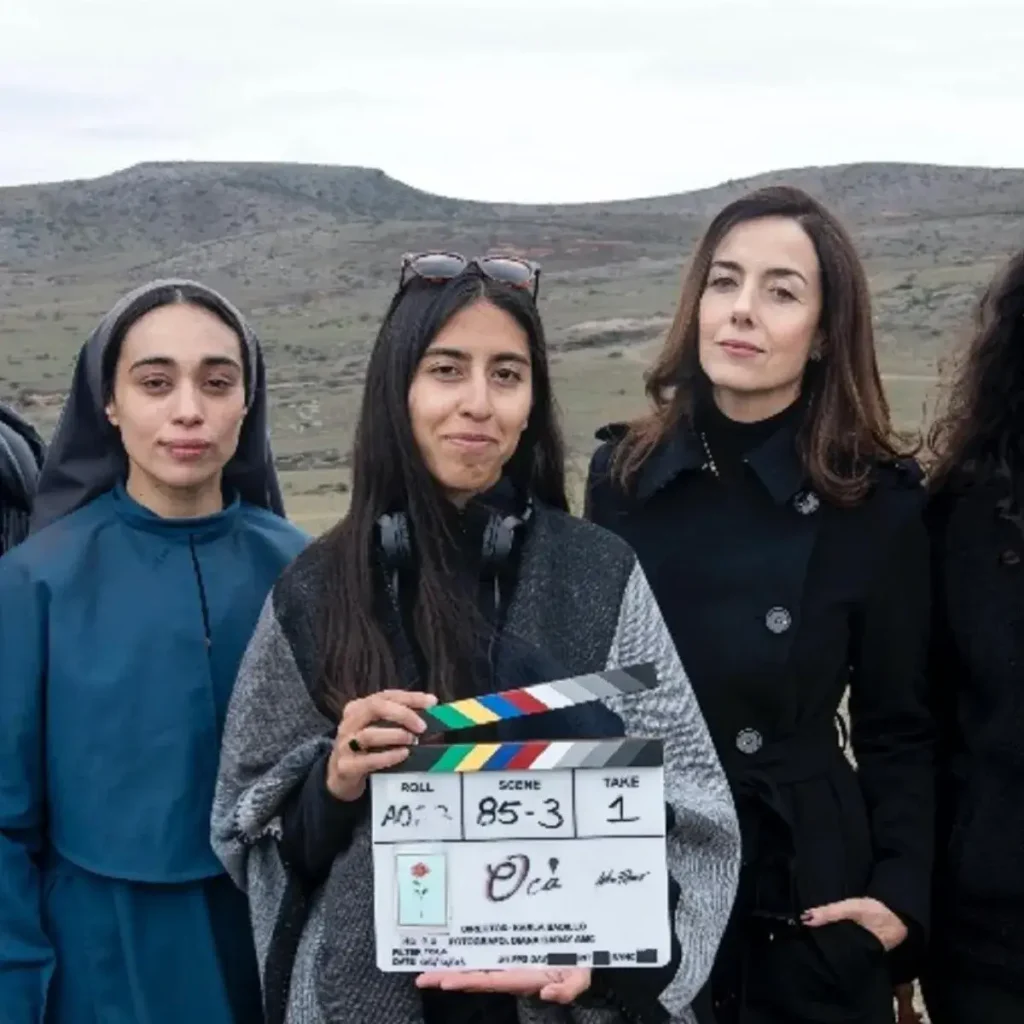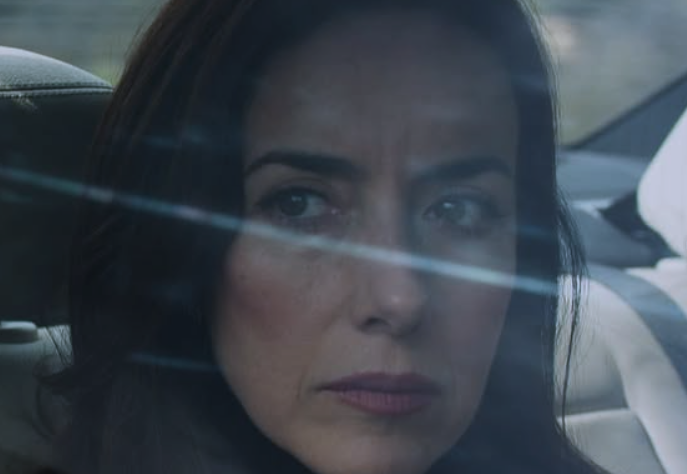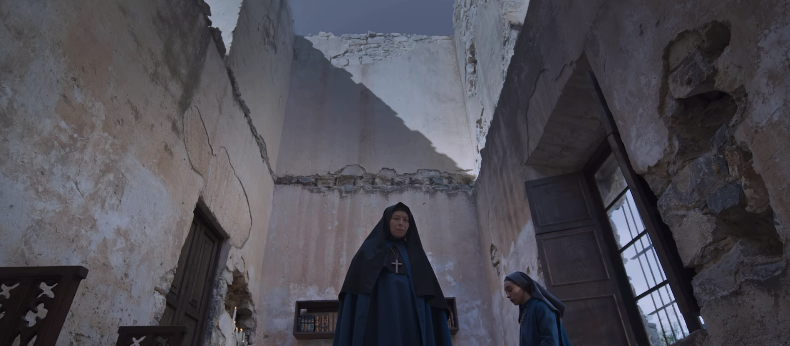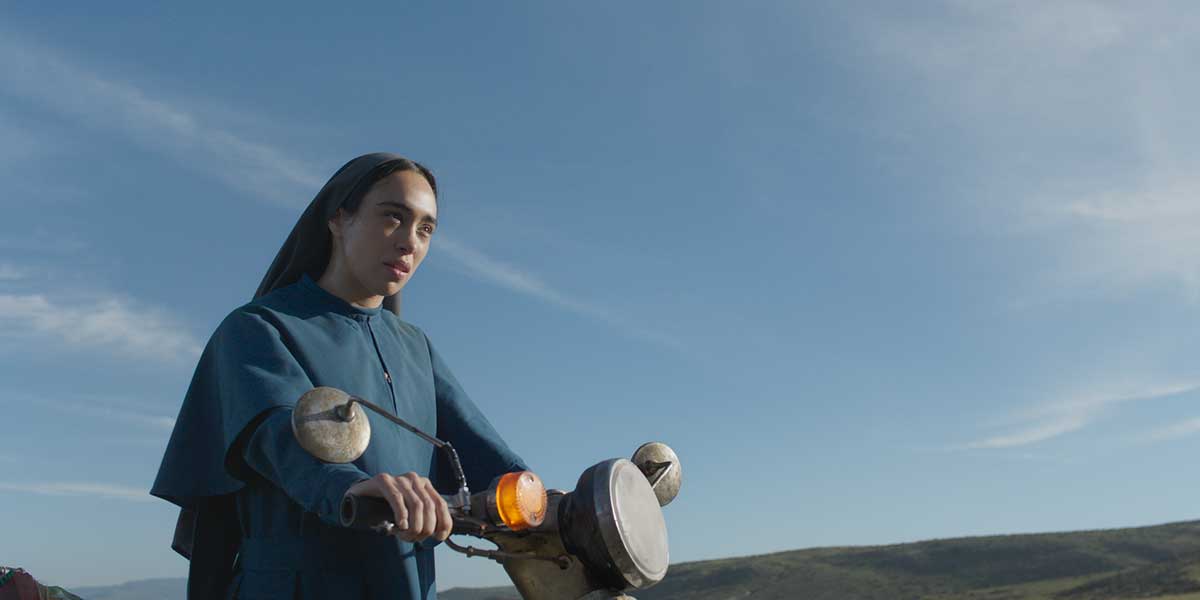by D. Movieman
“Souls cross ages like clouds cross skies….we cross, criss-cross, and recross our old
tracks like figure skaters.”
David Mitchell, Cloud Atlas (2004)
As I recall, a very eccentric nun was at the center of one of my earliest film experiences.
Well, technically, she wasn’t a “real” nun. However, Deloris Van Cartier, along with
Reverend Mother, Sister Mary Patrick, and Sister Mary Margaret brought the world of
nuns to life for me with Sister Act in the early 1990’s. They did so in a quirky, classic,
and hilarious manner, I might add. Echoing the struggles of Saint Katherine’s Parish,
Oca centers its story on Las Marianas, a convent marked by decline and desolation. It is
here that we are introduced to Rafaela (Natalia Solián), a faithful and steadfast young
nun who is also the recipient of strange dreams and visions. To ensure the survival of
the convent, Rafaela is sent out by her superior to garner the support of a newly
appointed archbishop. However, her journey grows increasingly complicated as she
crosses paths with a series of surprising individuals.

Under Karla Badillo’s direction, Oca’s strongest elements lie in the capturing of the
distinctive landscape surrounding Rafaela and the other travelers. Shot in San Luis
Potosí, the film drinks in the expansive mountains and rugged plains, allowing the
vastness of the land to mirror its themes of isolation and endurance. Conversely, one
shot shifts upward to a cloudless sky, catching Rafaela in prayer as the sun flares
behind her—nearly forming a glowing halo.

Natalia Solián gives a measured performance as Rafela, the nun struggling to maintain
her faith amidst an arduous journey. Additionally, seeing Cecilia Suárez suddenly
appear onscreen was quite a pleasant surprise. I’ve been a fan of hers since her turn as
the hilariously overbearing Paulina de la Mora in House of Flowers (La Casa de las
Flores) on Netflix. Her presence as Palmira is quietly assured, and I found her scenes
with her driver Manuel to be my personal highlights of the film.
Where Oca ultimately goes awry stems from its storytelling, as well as the scope of its
story as a whole. Rafaela is said to have dreams and visions, but the film never fully
draws from this narrative potential. Similarly, the film doesn’t seem to make the best use
of its interconnected characters within that story. I was intrigued by the idea of Rafaela
and these additional figures inadvertently crossing paths in this intensely remote setting.
Considering that four of these characters are women in various stages of life, I assumed there would be some promising dialogue or interactions between them. Naturally, my
understanding of them would grow as the film progressed, right? Uh….not so.

By the end of the film, most of these characters have found themselves in new spaces
geographically. Yet their internal journeys remain mostly at a standstill, resulting in a
strangely muddled emotional resolution. I found the placid pacing of the film to be
equally frustrating. I certainly can appreciate a slow burn when there’s a solid payoff.
Here, the slow is emphasized, while the burn is all but snuffed out. While the final
moments of the film are startling, it also raises more questions that are never answered.
While faith—and Rafaela’s reliance on it—is unfathomable, Oca is far too content with
leaving the audience floundering in its ambiguous depths.
Rating – 6/10.
Note: This review is based on a screening at the 2025 Toronto International Film
Festival. Oca does not yet have a confirmed release date.




